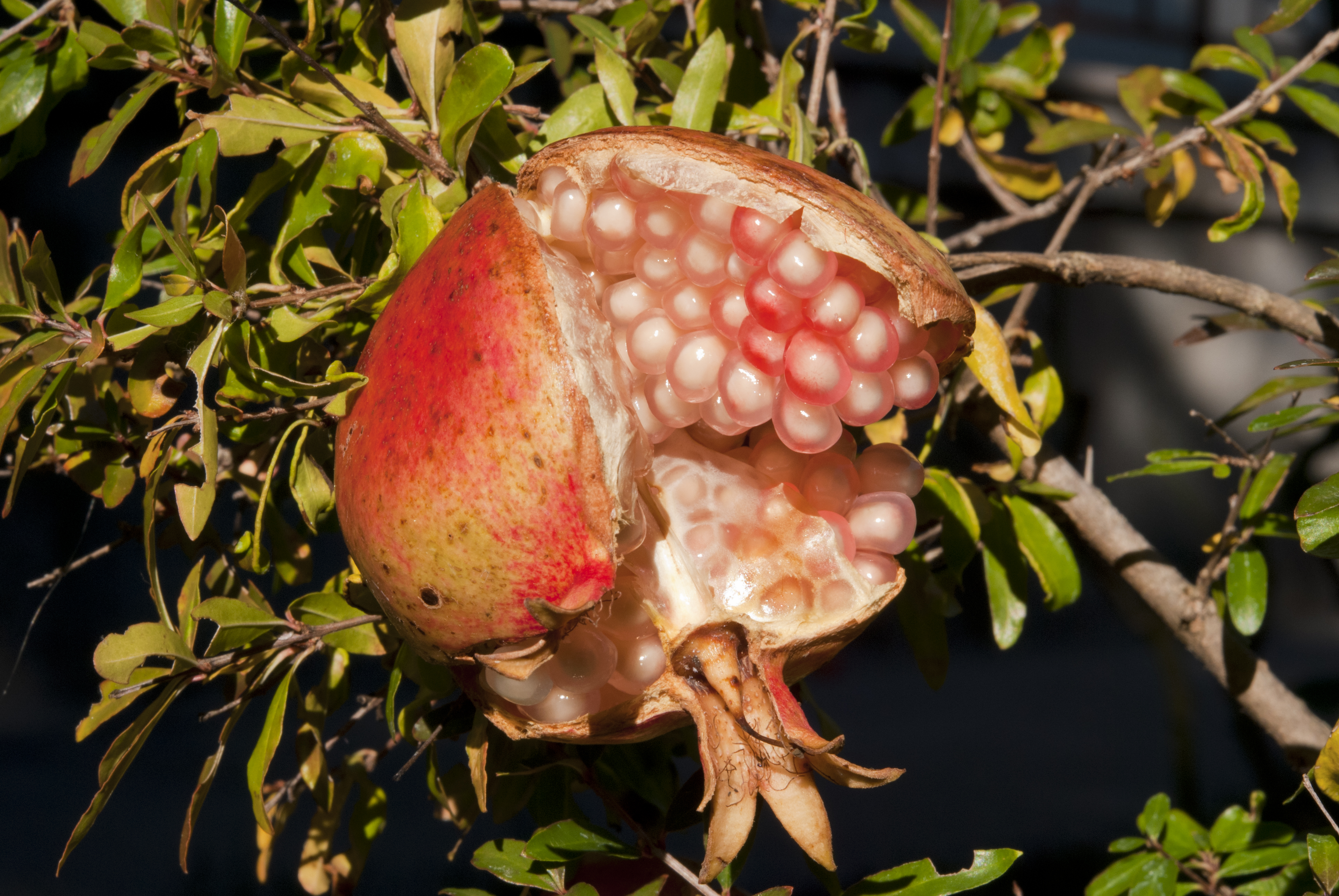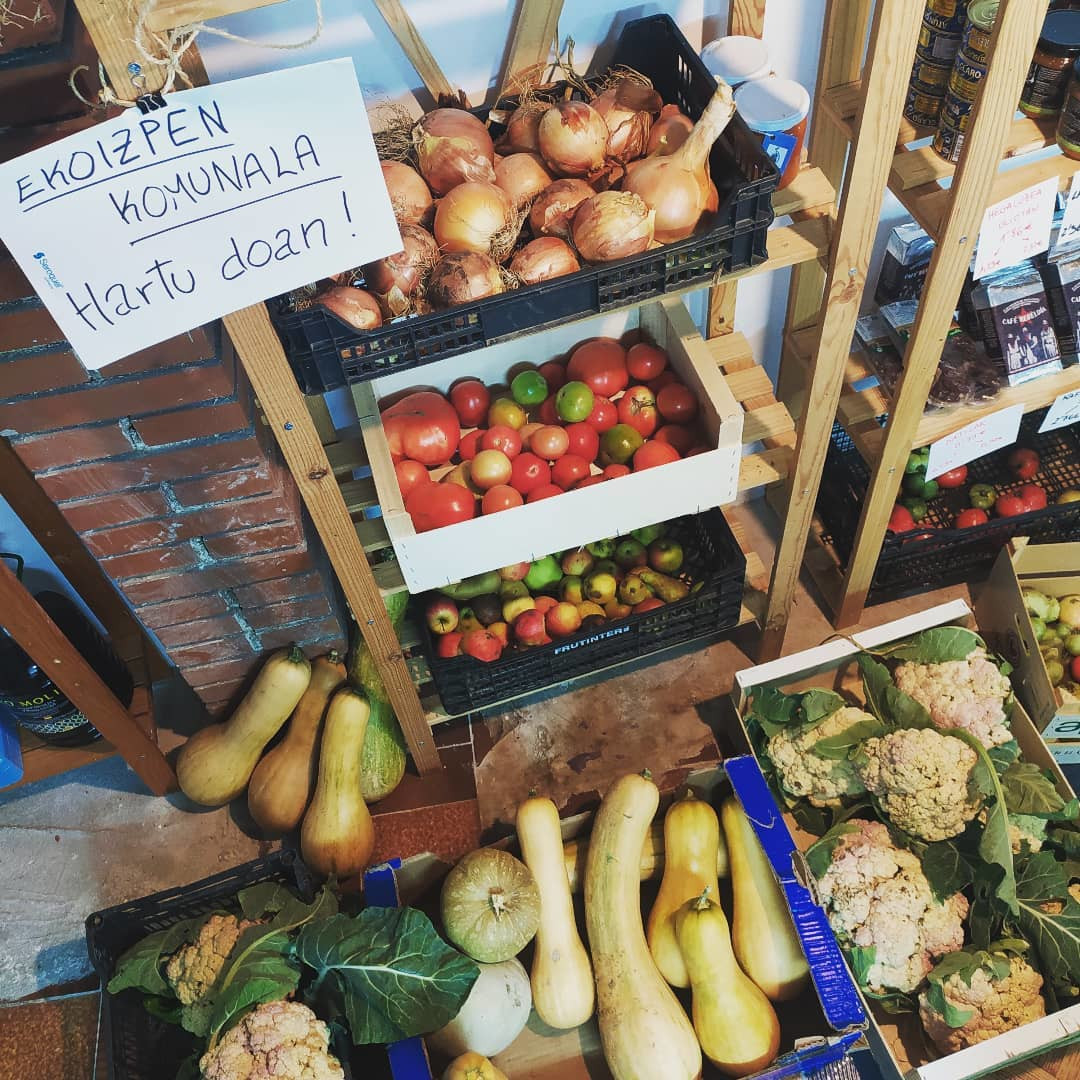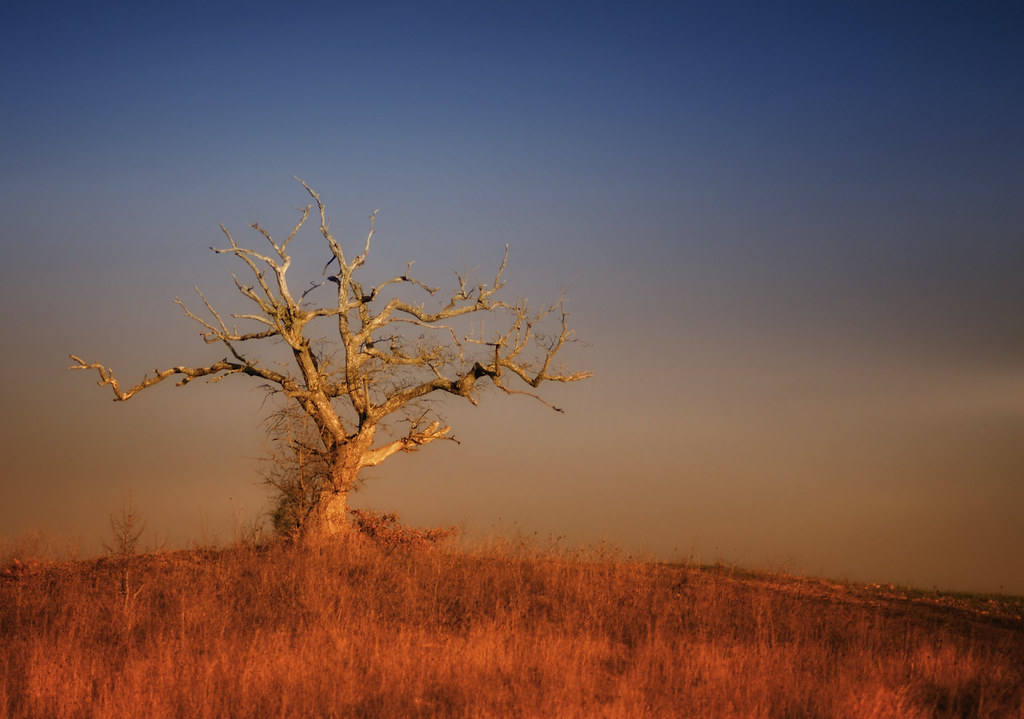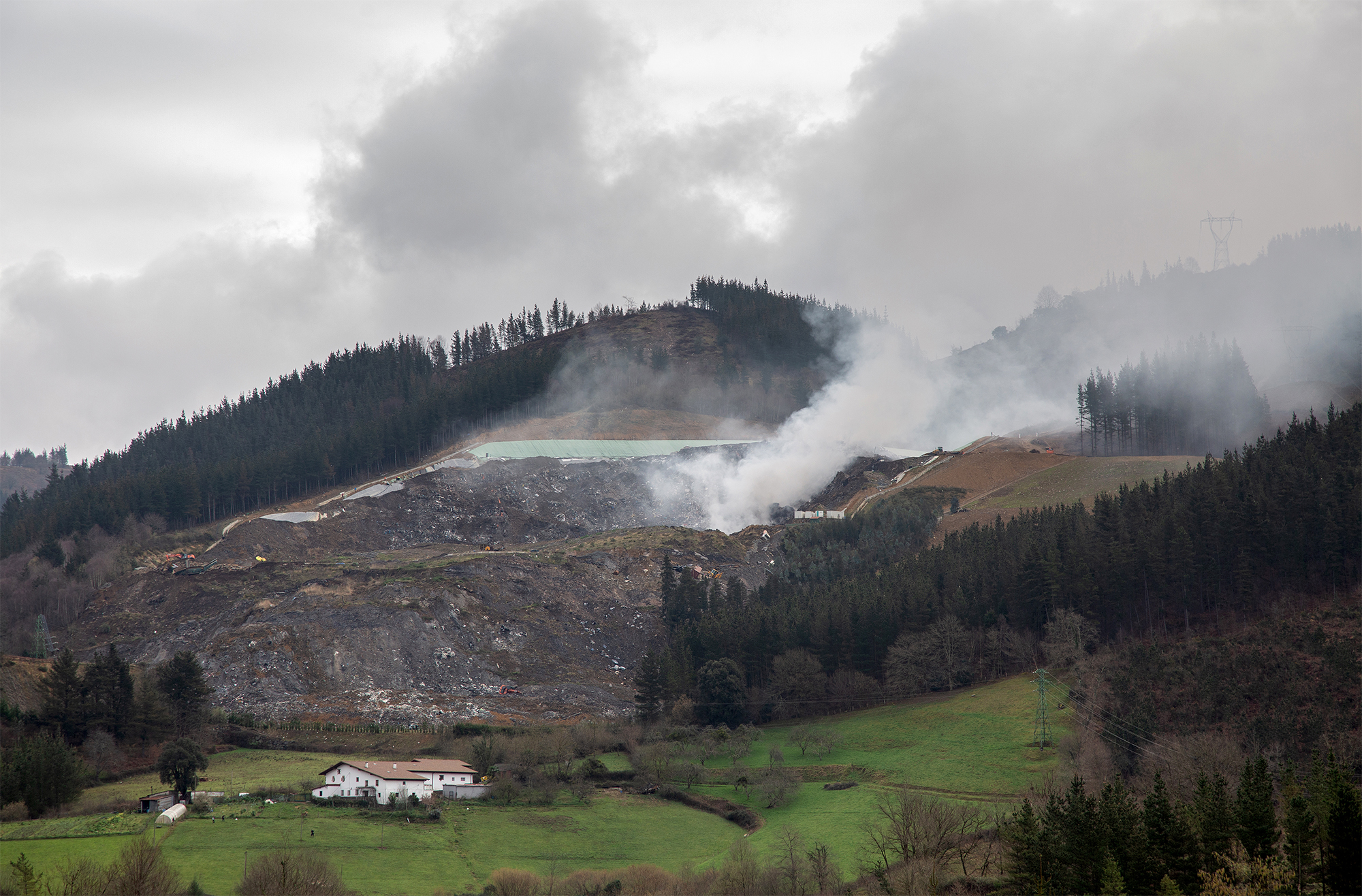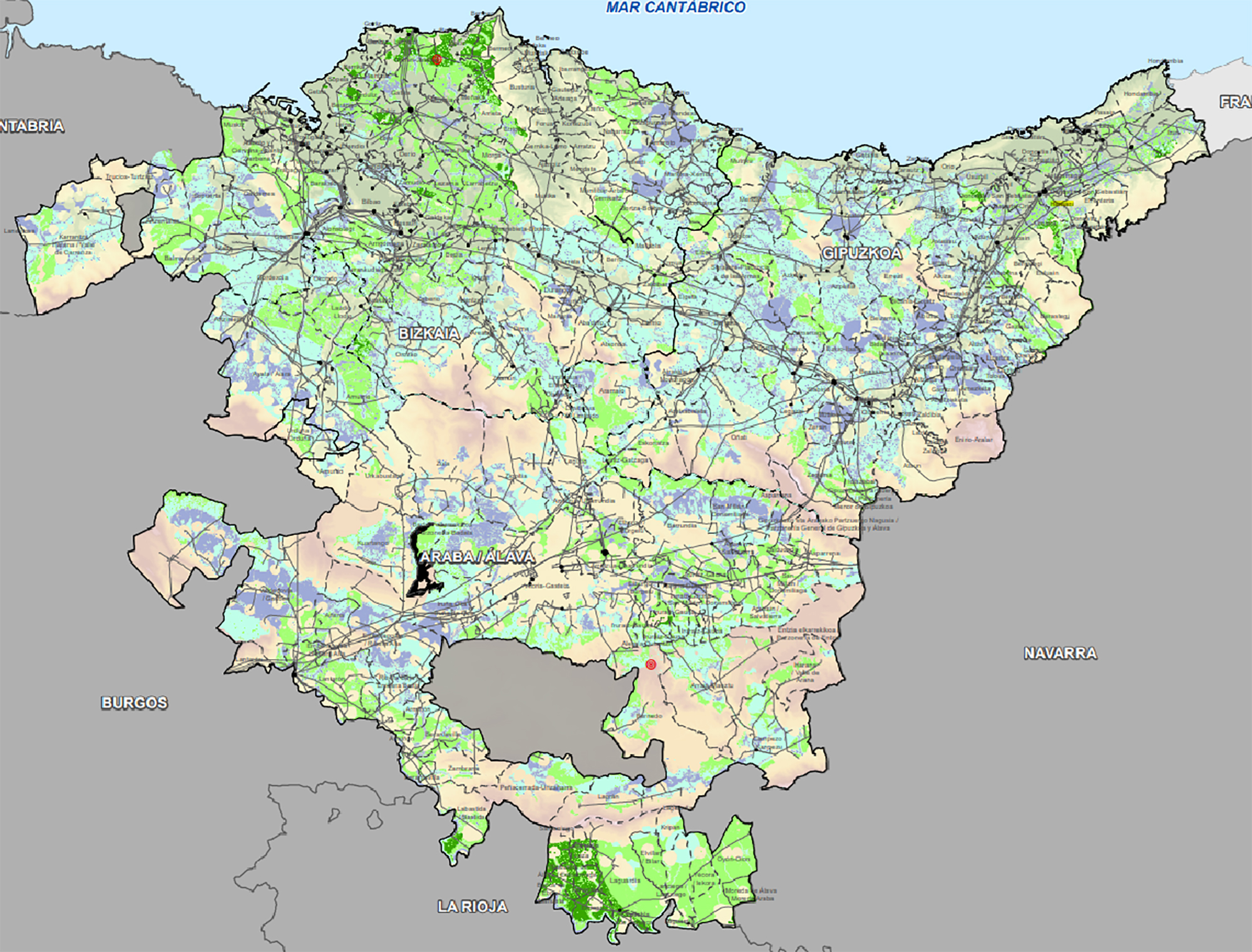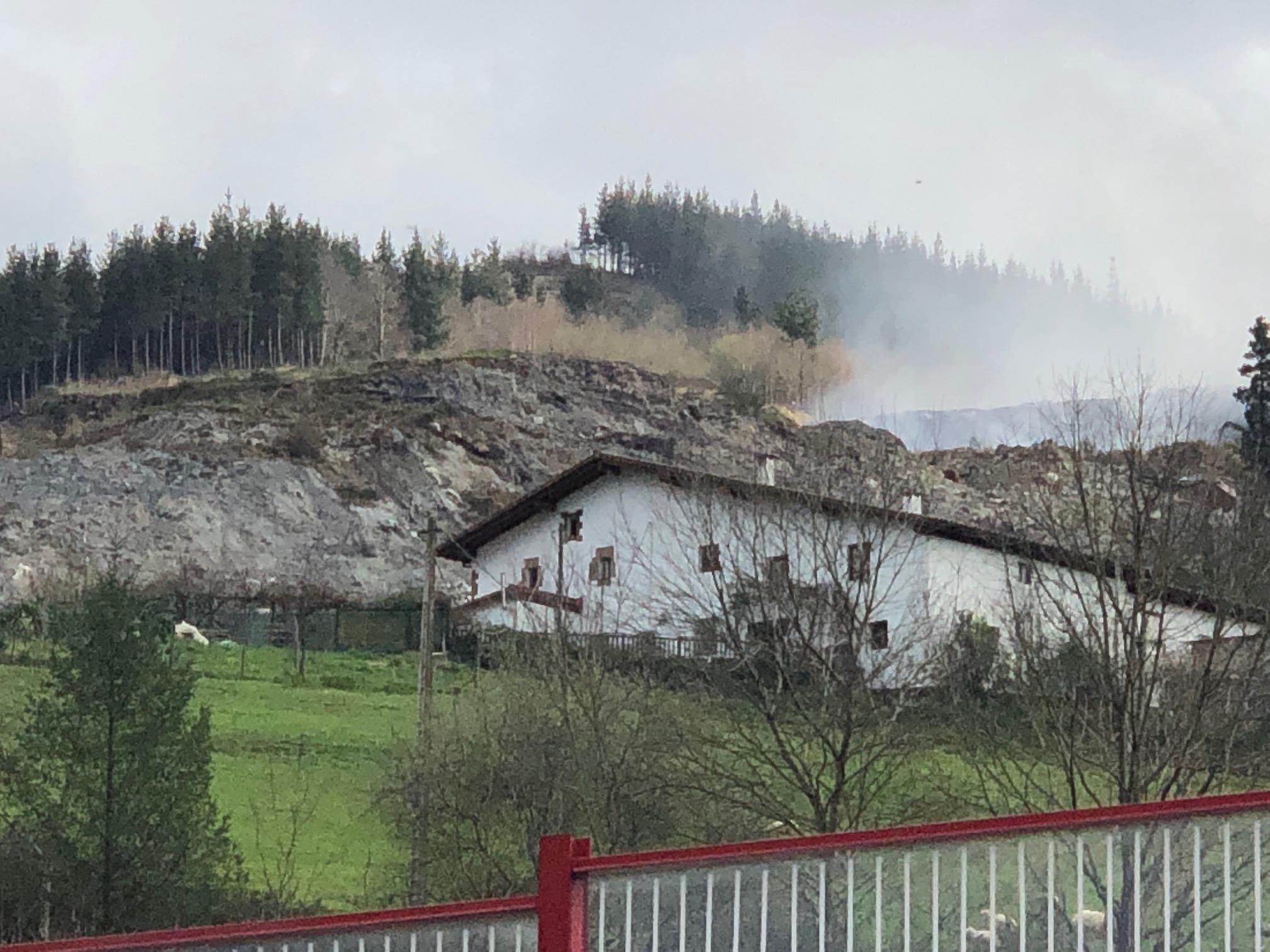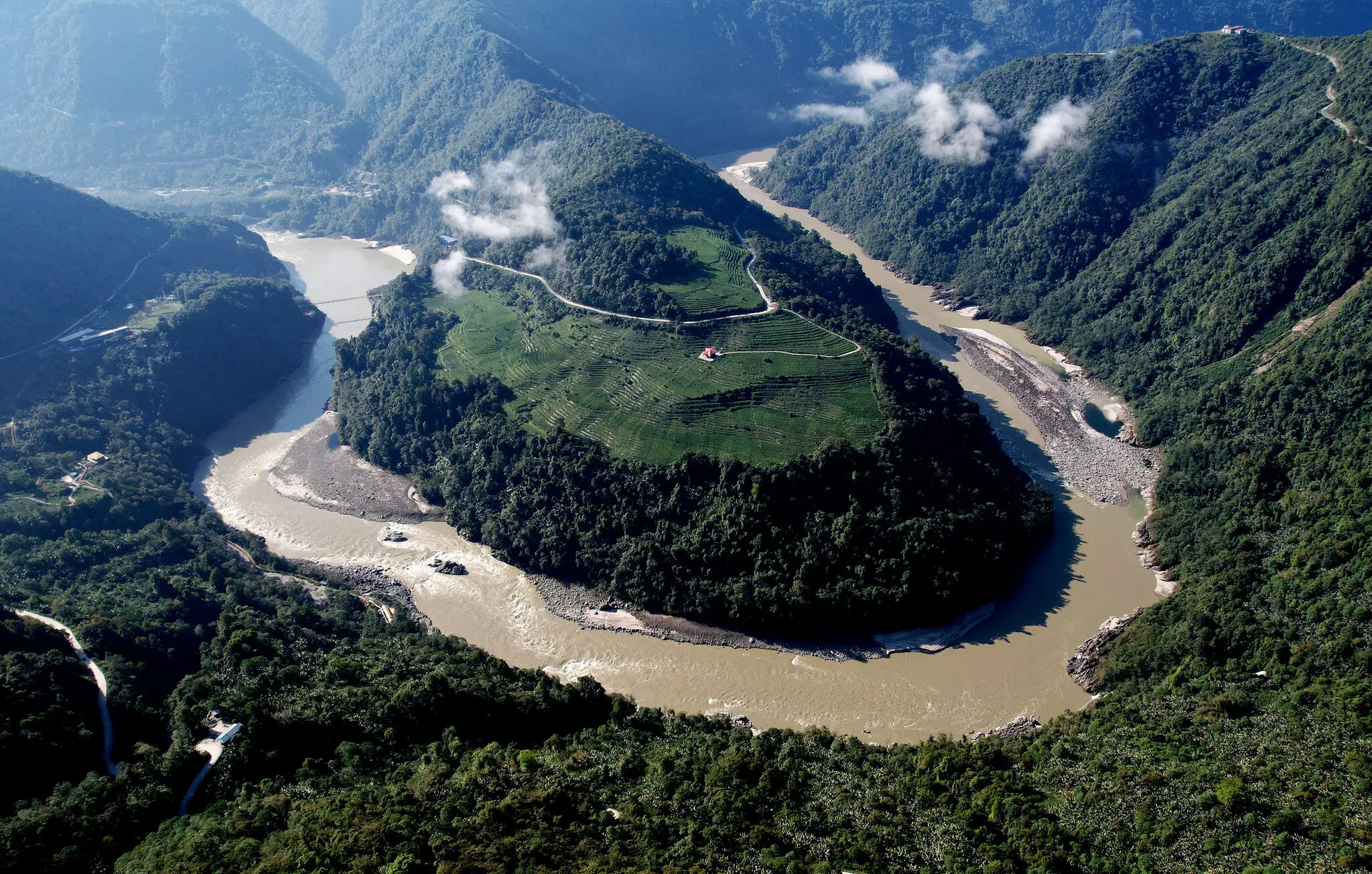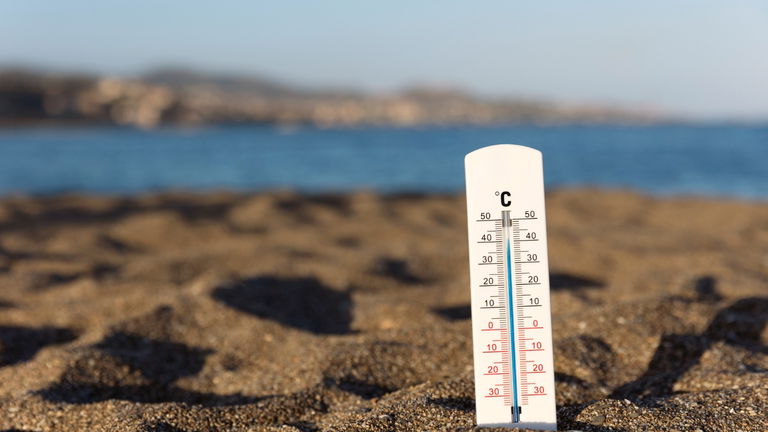Eucalyptus, desert risk
- The number of eucalyptus has increased almost five in recent years in Álava, Bizkaia and Gipuzkoa. According to a study carried out by experts from Aranzadi and the UPV, the extension of this tree would harm the environment in the Basque Country, and if it occupies the place of the insignis pine, in the short term the landscape and nature of many mountains will not be the same. We head to the Urumea, in search of hidden valleys threatened by eucalyptus, before becoming deserts.
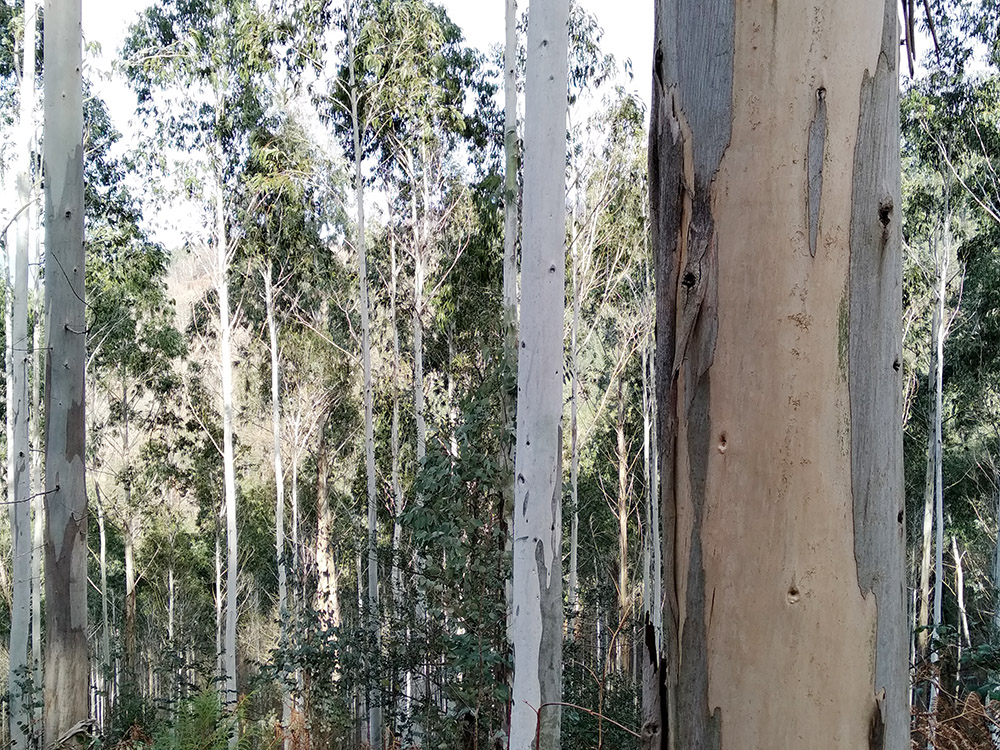
Among the smoothies and blended roses we can clearly hear the melodies of the small cascades. We are by the Kartola Creek, through the Urumea, passing through the urban centres of Hernani and the Ereñotzu district, in a valley as humble as naughty as it takes care of the unknown faces of the eastern area of Adarramendi. Above, following the path we have in front of us, the perspective changes radically: what was an extensive pine tree, now these are clear-cut areas of matarrase, with the exception of a few wallets that had been left upright by the piety of wood lovers.
The Association of Naturalists Haritzalde denounced in April last year that the forest massacre in the area was 70 sports stadiums. It has also directly affected protected animal and plant species. The school that owns these lands, in order to obtain the permission of cutting, first started among its four members, according to the ecologists. When we have been attracted by the anglerfish cry, we have realized that on some slopes eucalyptus has already begun to be planted in rows.
In Hernani last year, 70 hectares of eucalyptus were planted, half of the total so far in a single year, and there are already 220 hectares. It is not yet a small part of the forest area of the municipality, but to the extent that other plantations, especially pine forests, are being replaced, it is possible that a significant part of the 1,700 hectares occupied by plantations in the valley will soon be eucalyptus. Biologists Iñaki Sanz - Azkue and Arturo Elosegi have given several lectures in Hernani and Ereñotzu to raise awareness about the environmental impact this entails. Elosegi, professor of Plant Biology and Ecology at the UPV/EHU, has participated, at the request of the Basque Parliament, in an investigation on eucalyptus, together with herpetologists, ornithologists and biologists from the UPV/EHU and Aranzadi. “We review what was published and it surprises the consistency of the results: we expected everything, but all the researchers consistently claim that eucalyptus is harmful to the environment,” he explains.

To occupy the space ceded by insinsis
The covered area of eucalyptus has multiplied almost five times in Álava, Bizkaia and Gipuzkoa in the last three decades, when in the north of Navarre there is a department, in the Northern Basque Country nothing. Most of it belongs to the species Eucalyptus globulus (60%), but there is also Eucalyptus nitens franco (37%) that better supports the ice. Eucalyptus extends along the Biscayan coast and already covers 3.2% of the territory of the CAPV. It does not seem to be much, but its evolution is worrying, as in some places it is hegemonic: 50% of the land in the municipality of Maruri Jatabe has been absorbed by this tree, 44% in Lemoiz and 38% in Bakio.
This Oceania tree has a brief history in our country. Since the mid-19th century they brought their first seeds until recently, they were only cultivated as curiosity in the botanical gardens of the lords' rural houses. In 1958, the factory of the National Cellulose Company (ENCE) was launched in the Galician town of Louriza (Pontevedra) for the production of paper pulp, at which time the meteorological expansion of the eucalyptus along the Cantabrian coast began. Married to the business elite, the Francoist authorities subsidised the planting of eucalyptus from the 1970s on the grounds that the profitability of pine skyrocketed. In Bizkaia this tree was also extended by the paper industry and the institutions; if the council first promoted the insignis pine (Pinus radiata), then it was dedicated to eucalyptus.
.jpg) In the Basque Government's Forest Inventory of 1986, 3,769 hectares of eucalyptus were registered, 18,750 hectares in 2018, most of them in Bizkaia. But the forest has given the biggest color change in recent years: According to a report by the Hazi Foundation, in Araba, Bizkaia and Gipuzkoa there are 20,000 hectares less insinis.
In the Basque Government's Forest Inventory of 1986, 3,769 hectares of eucalyptus were registered, 18,750 hectares in 2018, most of them in Bizkaia. But the forest has given the biggest color change in recent years: According to a report by the Hazi Foundation, in Araba, Bizkaia and Gipuzkoa there are 20,000 hectares less insinis.
In 2018, brown ribbon sickness hit this conifer strongly, and many landowners started planting eucalyptus instead for immediate performance with the mentality of the past. In Gipuzkoa in 2020 the territorial area covered by this tree has doubled from 632 hectares to 1,214 hectares (see graph). Eucalyptus grows very quickly, is willing to cut it at 10 or 15 years and comes back on its own once cut. But you also have to measure the damage across the balance to see the total result. In December 2017, the Scientific Committee of the Spanish Catalogue of Invasive Alien Species “recommended” the inclusion of all eucalyptus species in this list. In fact, it fulfills the three characteristics of the invaders: being strangers, being at risk of self-spreading and damaging the environment. “But then they changed the law and introduced a fourth: if it can give economic exploitation, then it is not invading,” says Elosegi.
The debate also reached the Basque Parliament and, although they rejected the initiative to prevent the planting of eucalyptus, the Parliament ordered a scientific investigation that “analyzes the influence of eucalyptus on the earth and on biodiversity”.
“Special” tree
The report by the members of the UPV/EHU and Arazandi concludes that eucalyptus is harmful to the environment, not only because of the human damage to forestry, but also because of the intrinsic characteristics.
It's a very special tree. With little shade, its leaves are hanged vertically and the luminous regime is very different from that of the native forest, which favors the vegetation of the understory. Hydrophobia is another characteristic: the oil that pits the leaf, which gives it that particular smell, causes the water to slip into the fatty soil of eucalyptope, giving rise to more extreme situations in rains and stills, especially in areas with frosts greater than 50%.

The leaf also contains alelopathic compounds, that is, it prevents other plant species from growing in its surroundings, and its use as a natural herbicide has even been proposed. According to a study carried out in Galicia, in the Eucalyptus aged 6 to 10 years there were hardly any lichen, and in those over 25 years there were 63% less lichen than in the rest of the forests. Furthermore, herbaceous diversity is reduced by 40% in eucalyptus plots.
This essential oil is also toxic to animals, as the members of Aranzadi have seen in the Basque Country itself. Amphibians are one of the main predictors of biodiversity loss in our forests, very sensitive to changes in ecosystems. Studies with several species have shown that they directly suffer eucalyptus leachate. For example, in the case of the frog red forest, it also affects its growth, size and leap capacity (what is a frog that cannot jump well? ), and in the case of the palmed triton, in the immune response and in the reproductive strategy.
Researchers stress that the larger the eucalyptus plot, the more harmful it is for the whole basin. It also has to do with the current way of exploiting the forest. Using the processors, the last trunk is extracted with the machine, but this means drilling the slopes with clues. In Euskal Herria we are aware of the erosions and damages produced by the extraction of pine with this system. Although eucalyptus comes back after cutting it, every three or four years, 30 or 40 years, you also have to remove the stumps to replant the tree. In addition to soil fertility, hydrodynamics or, among other things, the decomposition of the litter that accumulates in the streams, the impact is not negligible. The density of aquatic invertebrates is much lower in eucalyptus, affecting the entire food chain, both of fish and of birds.
Scientists from the UPV and Aranzadi have drawn a table with a list to value with semaphoric colors what research on eucalyptus says: red and yellow spots fill almost all the windows.
The scientists of the UPV/EHU and Aranzadi have drawn a table with a list to value with semaphoric colors what the research says about the Eucalyptus: the red and yellow dots fill almost all the windows. “Of the 30 variables in which the results were collected, there are hardly any positive environmental impacts of eucalyptus,” the report states. It is therefore more damaging than pine forests and other plantations, and, of course, much more damaging than the native forest.
Every tree has its small habitat. In this microgloble there are many protected species, such as slate, which is mainly found in oak and oak trees, while linked to beech trees, it inhabits another very elongated beetle, called Alpine Rosalie. However, “there is no protected species in Europe that is associated with eucalyptus,” says Elosegi. Isn't it symptomatic?
Perfect storm in the Urumea
“There are very unurbanized and underdeveloped places; this whole area of more than Ereñotzu could be considered as an example of this – says Iñaki Sanz Azkue, dozens of people who have gathered at the Biteri Culture House in Hernani and follow a talk also on streaming. It is a landscape of great complexity and when it is almost a slope between 50 and 100%… let’s put this in relation to what Arthur said before about the eucalyptus and you will see what the effect is.”
It is not in vain that Aranzadi’s colleague, on the contrary, is gradually drawing the perfect storm that is emerging in that corner of the Urumea. Grey is a stone hill and slate in which the rain water from the runoff falls from the earth’s crust… and it rains, it rains a lot, because it is one of the rainiest places in the Basque Country and the Iberian Peninsula. Below, in the streams and springs, we find many rich microhabitats, “very potent from the point of view of biodiversity.” No wonder he is concerned about the natural disaster that eucalyptus can cause.

The Urmendi or Olaberri River that dies in the Urumea brings to life the valleys of Azqueta and Kartola, as well as eleven other typical branches, next to the hidden valley of Sagarreta, opposite the stream of Usoko, which is part of the feet of Mount Urdaburu. Researchers have found many species of threatened and protected plants in their deep streams: the plant of Soldanella villosa, the only one visible worldwide in the Basque Country, as well as some specimens of the unique endangered tree Prunus lusitanica, or the paleotropical ferns that have found refuge in these deep valleys since the tertiary era. Besides being home to a varied and valuable flora, this place can serve as a refuge for the European mink, topo water and many other kinds of threatened mammals, amphibians and fish.
This section of the Urumea serves as an ecological corridor between the Aiako Harria Natural Park and the Leitzaran Protected Biotope. Sanz Azkue explains that a few years ago he was called a request for information from the Basque Government to enter the areas of special conservation, but “the elections came and there was everything left.” Now, without an umbrella of protective rules, eucalyptus has opened the way. In fact, the death trap that traps this natural heritage has another tooth: most of the lands are private.
Wood lovers are hungry
“The baserritars are selling land in a very economic way to the companies that come from Cantabria – Elosegi warned us. As a citizen, I am concerned that streams and tracks are beyond our control. We often talk about how the external companies are operating in the Amazon… because here they are doing the same thing, on another scale.”
Eucalyptus are among the forests with more standing wood but with fewer deaths. In addition, when the cellulose is transformed into pasta, the life cycle of this wood is very short.
According to the CAPV 2018 Forestry Inventory, 15% of eucalyptus are located in publicly owned lands. In Bizkaia, 8.7% of the public mountains are covered by this tree, while in Álava and Gipuzkoa there are hardly any eucalypals in communal lands, although there are pinares. Therefore, the majority is cultivated in private land for management by large wood exploiters, with the paper mills being the main customers. It is not uncommon to see images of companies such as Iberpapel or Smurfit Kappa in locations where clear-cutting and short films are made. They are part of a large lobby.
The Basque Timber Association Baskegur on its website indicates that each cubic meter of wood that grows absorbs 275 kg of CO2: “We planted more trees than we cut.” But are all forests equal when we talk about carbon deposits? Experts also look at the carbon that accumulates in the soil humus and litter, and eucalyptus are among the forests with more standing wood but with fewer deaths. In addition, when the cellulose is transformed into pasta, the life cycle of this wood is very short.

The intensive logging model, in addition to affecting biodiversity, can have other effects. “The brown ribbon has long been known, but why have these pests multiplied? The climate? Maybe yes, but management also has something to do with it,” explains the UPV professor. Galicia and Asturias already have serious problems with a small beetle that attacks eucalyptus. Fires are also a cause for concern: Seeing how Eucalyptus monocultures calcined in Portugal in the summer of 2017 sparked panic, but despite being an flammable species, there seem to be social factors behind its expansion.
Facing the globalized tree
And what's the alternative? What to do with our forests? It is being demonstrated in many villages. In issue number 2.721 of this weekly we inform you of the initiative of the Lurgaia Foundation in Muxika for the creation of a mixed stand in the place where the eucalyptus and the pine tree were located, for which a purchase or transfer of land has been launched. The City Hall of Hernani and the City Hall of Ereñotzu are going to start a similar project, and other municipalities have begun to acquire land to expand the reserves of the public forests of the area (see interview with Iñaki Aizpuru, mayor of Itsasondo for this report) or have banned the planting of eucalyptus, as is the case of Ezswick -Itsaso.
In Álava, Uhandre Amurrio’s Live Mountains platform has asked the city council to demand a moratorium from the Provincial Council of Álava “based on scientific evidence of the environmental damage caused by the eucalyptus”.
Groups are being created here and there to protect the native forests and alert them to the damage of eucalyptus. In Bizkaia, the Forests of all colours proposal has been being promoted for a few years, with the accession of dozens of agents and individuals. Groups and cooperatives of forest owners have been set up in Gipuzkoa in Soraluze, Eibar, Zarautz, Alto Deba... In Álava, Uhandre Amurrio’s Live Mountains platform has asked the city council to demand a moratorium from the Provincial Council of Álava “based on scientific evidence of the environmental damage caused by the eucalyptus”.
Outside of here, the Asturian city of Xixon has cut 2,000 hectares of eucalyptus into communal lands and declared free zones of this tree. The Galician municipality of Castroverde is in conflict with private owners who want to avoid planting eucalyptus. In Colombia, in the locality of Seville, the multinational Smurfit Kappa has half the land for eucalyptus and its communities are fighting… There are 20 million hectares of eucalyptus cultivated around the world, probably the first globalized tree.

We go down the track of the map, leaving behind the clear-cutting; the falcon is screaming again, and far away you hear a water myrrh mixed with the sounds of the river. We don't know when he's going to stop singing.

Iñaki Aizpuru Itsasondoko alkateak badu esperientziarik basogintzaz, Gipuzkoako Aldundian eta Ihobe sozietatean hainbat urtez aritua, botanikoa da. Itsasondon bertako basoa berreskuratzeko abian jarri duten programaren inguruan hitz egin dugu berarekin.
“Udalak dozena bat urte darama herriko lurrei etorkizun bat eman nahian eta horretarako terrenoak erosten ari gara”. Itsasondok apenas du 10 kilometro koadroko azalera, baina badu altxor bat gibelaldean: Murumendi. “Hor oraindik nahiko baso gelditzen da, eta gainera, natur interes-gune eta korridore ekologiko gisa izendatuta dago”. Urteroko aurrekontuan diru bat erreserbatzen dute lurra erosteko eta jadanik 100 hektareatik gora eskuratu dituzte: “Eskaintza handiagoa da erosi dezakeguna baino”.
Baina lur publiko hauek zertarako erabili? Aizpuruk garbi du bertako basoak ematen duen lehen gauza “ura eta aire garbia” direla. Baina aukera gehiago ere badaude, herritarrek aprobetxatu dezaten: “Itsasondoko basoa erreserba mikologiko izendatu dugu eta Ultzamako elkartearekin lanean ari gara. Udaberrian inokulazioak egiten hasiko gara Palentziako ingeniaritza batekin, lehenik onddo zuria eta gero bi boilur edo trufa klase sartuko ditugu”.
Otsaila hasieran Itsasondoko Udalak aho batez onartu zuen eukaliptoaren aurkako mozio bat, Naturkon Gipuzkoako natur taldeen koordinadorak aurkeztua. “Gure helburu eta jokabideekin bat zetorren, gure mendian eukaliptoak ez du kabidarik, beste bide bat egiten ari gara”, dio botanikoak. Itsasondon ez da oraindik eukaliptadirik sartu, baina “tentazio” horri aurre hartu nahi izan diote. Basogintzako eskumena foru aldundiarena izanik ere, Tokiko Erakundeen Legeak mendiaren antolaketa udalen esku uzten duela azaldu digu Aizpuruk eta udal antolaketa plana berritu bitartean behin behinekoz eukalipto landaketak ez baimentzea erabaki dutela, beste udalerri batzuetan egin bezala.
“Zenbat jende bizi gara Gipuzkoan kilometro koadro gutxitan? –galdegin du elkarrizketatuak– Hektarea bakoitzeko hiru gipuzkoar eta erdi sartu beharko genituzke. Orain, COVID-19arekin, hasi gara esaten natura behar dugula, jende gehiago dabil mendian… baina ez dugu mendirik! Etorkizunean lurra gero eta beharrezkoago izango dugu eta ez gaude eukaliptoekin alferrik galtzeko”.
Bertako basoaren inguruko bestelako jarduerek herriari bizitasun handiagoa ekarriko diotela konbentzituta dago alkatea: bateko eskolako unitate didaktikoak, besteko basozain praktikak, unibertsitateko tesiak… Zeren eta, “hektareako gastatzen dugun diru horrekin, zer eskaini behar diegu herritarrei, eukaliptoa?”.












